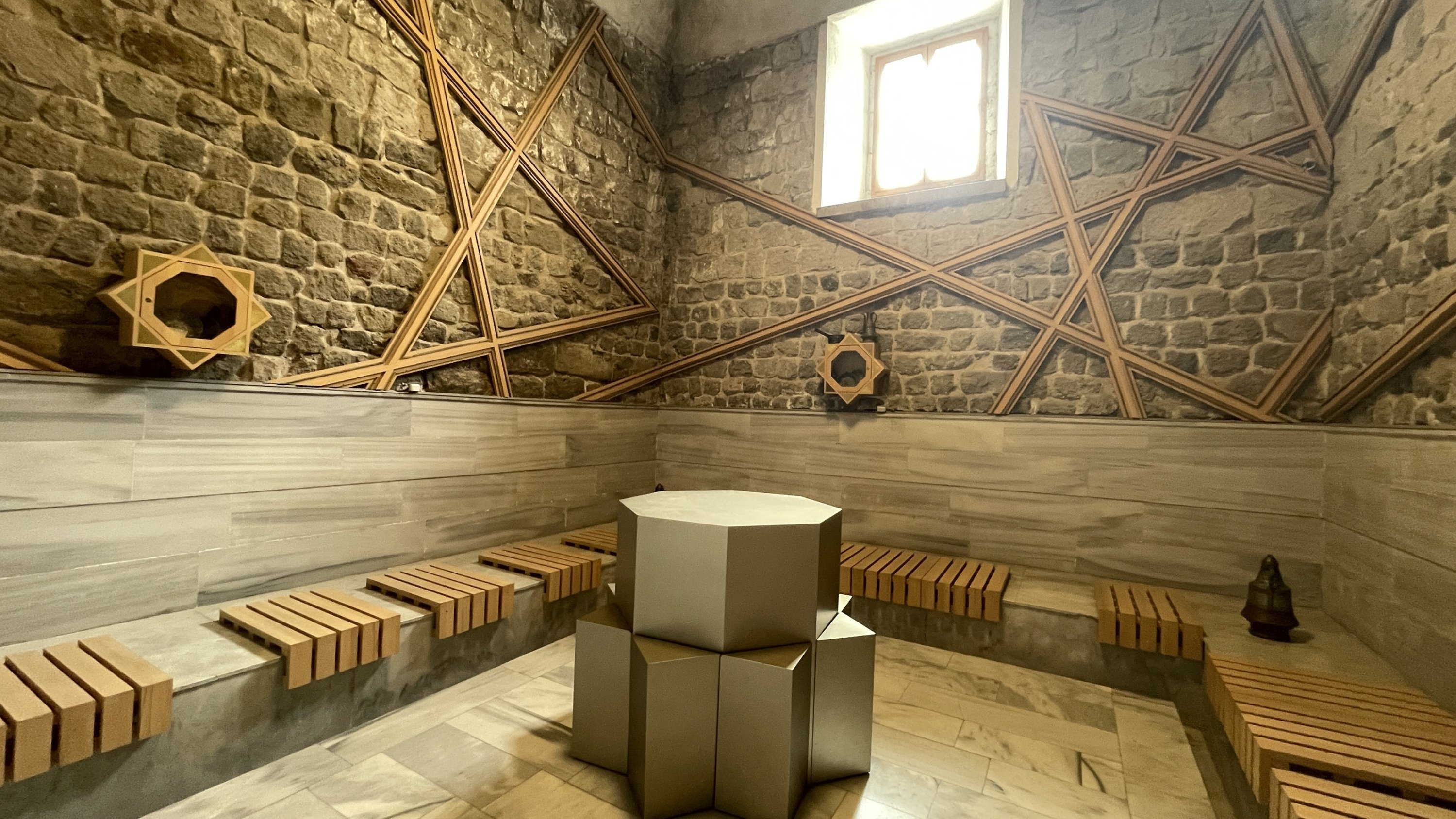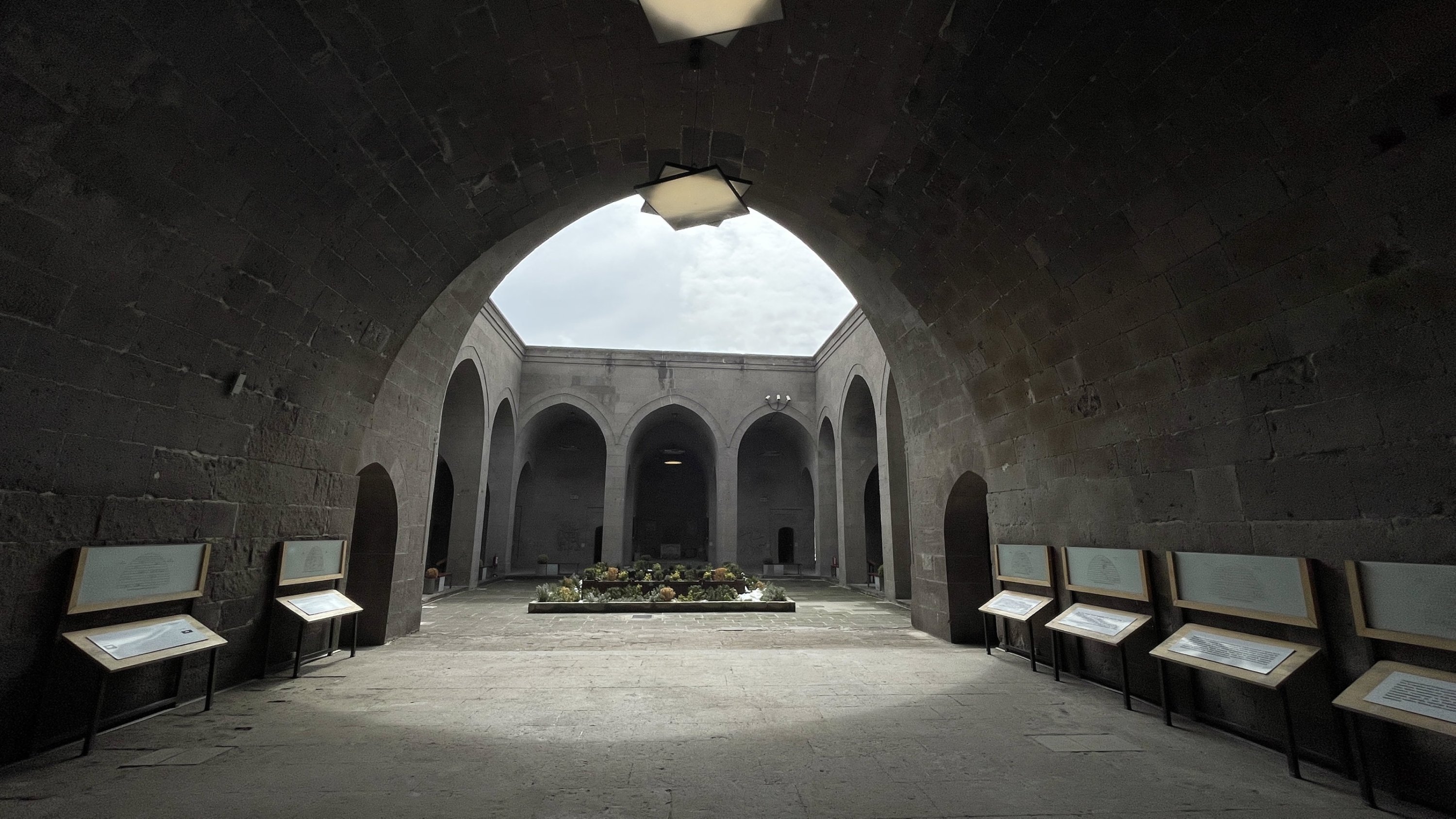© Turkuvaz Haberleşme ve Yayıncılık 2025
Nestled within the majestic walls of a 13th-century building, the Gevher Nesibe Medical Complex was once a groundbreaking medical institution that welcomed the sick from across the region, offering them treatment during its prime. Recognized as one of the most advanced medical facilities of its time, it is often considered the world’s oldest surviving medical institution, standing as a testament to the remarkable medical achievements of the Seljuk era.
Built in accordance with the will of Gevher Nesibe Sultan, daughter of Seljuk ruler Kilij Arslan II and sister of Gıyaseddin Keyhüsrev I, the historic darüş-şifa (hospital) continues to attract attention. After succumbing to tuberculosis following an ill-fated love with the palace's chief sipahi (cavalry officer), Gevher Nesibe’s legacy left an indelible mark on the course of medical history. This remarkable site, where music therapy was practiced as a form of treatment, offers a fascinating glimpse into medieval medical practices and highlights the Seljuk approach to healing.

Spanning approximately 2,800 square meters, the complex consists of several key sections, including a şifahane where patients were diagnosed, treated and operated on, a bimarhane where the sick were treated with the healing powers of music and a madrasa, widely regarded as the world’s first medical school. Each of these areas contributed to the comprehensive approach to healing that was ahead of its time.
Now functioning as a museum, the madrasa showcases an array of medical instruments, pharmaceutical tools and treatment methods from the Seljuk period, offering a fascinating exploration of ancient medical practices. Historian Gündüz emphasized its historical significance, noting that Sultan Gıyaseddin Keyhüsrev I commissioned the structure between 1205 and 1206 in memory of his beloved sister.
The complex also features a medical school, practice areas for students, a hospital dedicated to the treatment of mental illnesses, a bathhouse and a mosque. These various sections not only highlight the comprehensive nature of the institution but also its mission of healing both the physical wounds of the body and the emotional wounds of the heart, reflecting a holistic approach to well-being.

Sharing the madrasa’s founding story, Gündüz stated:
"Gevher Nesibe Sultan fell in love with the palace's chief sipahi. When her brother, Gıyaseddin Keyhüsrev I, learned of their relationship, he sent the sipahi to war. Gravely wounded in battle, the sipahi returned to Kayseri, where he died in Gevher Nesibe’s arms. Stricken with grief, she fell ill and, in her final wish, requested the establishment of a hospital to heal both physical and emotional wounds. This led to the construction of the darüşşifa. The facility continued to function as a medical school until 1890, with students training and practicing under the guidance of their instructors."
Today, the museum continues to draw attention from visitors around the world. Approximately 100,000 people visit the Gevher Nesibe Medical Complex annually, marveling at the complex’s rich history and its lasting contributions to the field of medicine.
